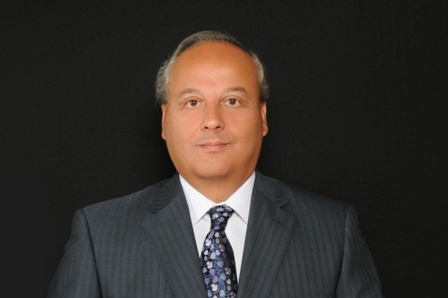Ernst & Young’s Market Leader for Mena – Bassam Hage – tells Accountant Middle East that the Rapid-Growth Markets remain pivotal to the hopes for sustainable global economic recovery…
Q. How have the rapid growth markets performed in general?
A. Ernst & Young’s recent report titled; ‘Rapid-Growth Markets Forecast’ (RGM)predicts that these markets will pick up from 4.7% in 2012 to 5.4% this year and 6.4% in 2014. These data indicate that the lull in RGM expansion which occurred in 2012 was, as hoped, a temporary phase rather than the beginning of something more enduring. We forecast that RGMs will underpin a recovery in global growth from 3% in 2012 to 4.2% in 2014.
These are impressive — and much needed — numbers, but how can the recovery be sustained?
When examining the recent histories of countries which have enjoyed sustained rapid growth, four key lessons emerge. Political stability and strong leadership is crucial, especially when augmented by a stable and prudent macroeconomic policy. High capital investment, particularly in infrastructure, is another key driver of growth; as is an open and balanced trade policy that can be adapted over time. Positive action in these four areas will lead to competitive advantage and offers countries the best route toward their shared ambition of rapid and sustainable growth.
What about the RGM’s in the Middle East?
Growth in the three rapid-growth markets of Saudi Arabia, the United Arab Emirates and Qatar remains robust, although the pace began to slow in H2 2012 and is expected to continue in 2013 with oil prices remaining lower than earlier this year. But the region is benefiting from expansionary fiscal policy, facilitated by healthy public finances, the high absolute level of oil prices and rising oil production. Monetary policy is also accommodative. External factors are favorable, too, because their trade is orientated toward faster growing Asian markets rather than the Eurozone. Even so, these RGMs have not been immune to the Eurozone crisis or to weak US growth.
What are the trends that you see in the RGMs?
First is the mounting attraction of consumer demand in emerging markets, where surging prosperity and expanding middle classes add to the breadth and scale of internal consumption. Second is the opportunity arising as investment — by the private and public sectors alike — reshapes emerging economies. And finally, there is the likely tendency of investment to flow to those economies where policy reform and structural adjustment help accelerate growth. Such a trend creates incentives for policy-makers to innovate in search of better governance and more efficient service delivery, thereby triggering a virtuous spiral.
What should policy makers in the RGM consider to help their economies sustain its momentum?
In plotting a course for the future RGMs policy makers should focus on four key factors that have driven the development paths of the past: political stability and strong political leadership; stable and prudent macroeconomic policy; high capital investment; and following an open and well balanced trade policy and adapting it over time as the global marketplace changes.
How do you see developed markets doing?
Unlike the RGMs, the developed economies are not expected to contribute initially to the pickup in global economic momentum: in 2013, growth of just 1.3% is forecast, unchanged from 2012. It will not be until 2014 that the advanced economies gain further momentum, with growth expected to nearly double to 2.5%, as Japan and the Eurozone pull slowly out of recession.
Both Japan and the Eurozone ended 2012 in recession and recovery in 2013 is expected to be weak and heavily dependent on the anticipated upturn in world trade to offset subdued domestic demand. Much the same is true of the UK. Monetary policy in developed countries faces an uphill struggle if it is to offset the fiscal squeeze in Europe and force down the value of the yen in Japan.
Only in the US are significant upside risks to growth visible. More progress has been made there in adjusting the balance sheets of banks and consumers than in the UK and Europe, and consequently monetary policy has been more effective at stimulating growth.
Lending growth is stronger than in the UK and Eurozone and the housing market is showing clear signs of recovery. This will help boost construction output and consumer spending via wealth effects. Other factors in the US economy’s favour include its high degree of international competitiveness and the “shale gas revolution” that is making the US less dependent on others for energy.
GROWING BEYOND
The quarterly Ernst & Young ‘Rapid Growth Markets’ report aims to fulfill the need for practical and accessible economic forecasts and insights on the development in a list of 25 rapid growth countries around the world.
The study is a macroeconomic forecast co-produced with Oxford Economics, and the growth countries are selected based on three key criteria – they should be large, both in terms of GDF and demographics, they should be dynamic, rapidly growing countries and of strategic importance for business development.
The forecast is based on Oxford Economics Global Econometric Model and provides analysis of the implications for corporations doing business in rapid growth markets and gives recommendations for decision-makers.
Fast pace of growth
The dynamics of the global economy have changed with a new set of fast-growing markets challenging the position of the established advanced economies. Taken together, Rapid Growth Markets (RGM) have grown on average by 5.4% a year over the last decade, more than three times as fast as the advanced economies, and this fast pace of growth is set to continue, with growth in RGM outpacing the advanced economies by nearly 3.5% over the 10 years to 2020.
Also, RGM will account for 50% of global GDP by 2020, when measured at purchasing power parity. They will also account for 38% of world consumer spending and 55% of world fixed capital investment.
The report is a selection of the top 25 of RGM based on their;
(i) proven strong growth and future potential
(ii) size of economy and population
(iii) strategic importance for business. A separate national forecast and associated commentary is included for all 25 countries, listed below.
| EMEIA | Asia-Pacific | Americas |
| Czech Republic | Greater China (including Hong Kong) | Argentina |
| Egypt | Indonesia | Brazil |
| Ghana | Malaysia | Chile |
| India | South Korea | Columbia |
| Kazakhstan | Thailand | Mexico |
| Nigeria | Vietnam | |
| Poland | ||
| Qatar | ||
| Russia | ||
| Saudi Arabia | ||
| South Africa | ||
| Turkey | ||
| UAE | ||
| Ukraine |
The four MENA countries included in the RGM are Egypt, Qatar, Saudi Arabia and the UAE.
The main forecast as well as the country pages includes outlooks on: trade, competitiveness, interest rates and exchange rates, commodity prices, world price of manufactured goods and Foreign Direct Investments (FDI) inflows. The report also provides commentary on the implications of the forecast for business.
Mideast growth predictions
The growth in the Middle Eastern RGMs is expected to slow a little as tensions in the region moderate, allowing oil prices to fall. Despite a lower oil price, growth in the Middle Eastern RGMs is expected to remain robust.
Growth in the three rapid-growth markets of the GCC, Saudi Arabia, the United Arab Emirates and Qatar, remains robust, although the pace began to slow in H2 2012 and is expected to continue in 2013 with oil prices remaining lower than earlier this year. But the region is benefiting from expansionary fiscal policy, facilitated by healthy public finances, the high absolute level of oil prices and rising oil production.
Monetary policy is also accommodative. External factors are favourable, too, because their trade is orientated toward faster growing Asian markets rather than the Eurozone. Even so, these RGMs have not been immune to the Eurozone crisis or to weak US growth: capital inflows have fallen, and longer-term bank lending is down.
The RGMs in the GCC face some longer-term problems. Non-oil fiscal deficits are rising because of a surge in government spending, particularly on wages, other social benefits and subsidies following the Arab Spring.
Budget surplus to plummet
This leaves these countries vulnerable to a fall in global oil prices and energy demand. The Ernst & Young model suggests that even with an oil price of $105.2pb in 2013, Saudi Arabia’s budget surplus will plummet to less than 4% of GDP, from almost 10% estimated in 2012. (But Saudi Arabia, like the UAE, has substantial external assets which would cushion the economy from oil-price shocks.) A further challenge for the medium term is the need to generate jobs for a young and rapidly growing population, with rising expectations to match.
Qatar’s growth rate is expected to slow from 6.0% in 2012 to 5.5% in 2013 on lower oil and gas output, in part due to the moratorium on further liquefied natural gas (LNG) expansion. In the medium term, the economy is expected to grow in excess of 6%, driven by robust government spending and strong commodities exports, particularly to Asia. Saudi Arabia’s growth is also expected to slow, from 6.8% in 2012 to 4.1% in 2013, largely due to weaker oil prices.
In contrast, the UAE is expected to see growth picking up from 3.3% in 2012 to 3.7% in 2013 as the key crisis-hit property and financial sectors continue to recover and global headwinds moderate.
Outlook on Egypt
Preliminary agreement on a $4.8b IMF loan and the implementation of a national economic plan has been reached. The deal is likely to unlock other sources of international fi nance, bolster confidence and the Egyptian pound, accelerate much-needed economic reforms and act as an anchor for prudent policies.
Fiscal austerity is likely to see substantial cuts in fuel subsidies and a hike in the sales tax. Such measures are designed to help cut the budget deficit to around 10% of GDP in 2012-13 from an estimated 11% of GDP in 2011-12.
Growth prospects remain weak. We forecast GDP to be little changed from last year at 2.1% in 2012-13. Prospects are constrained by political uncertainty, the Eurozone crisis, the poor near-term outlook for tourism and FDI inflows, and unfavorable base effects.
And there are substantial downside risks to our growth forecasts.
These include renewed political instability, implementation of populist policies and fiscal slippage. In addition, there are geopolitical risks, deteriorating global economic conditions (specifically hitting Suez Canal traffic) and the ongoing crisis in the Eurozone — Egypt’s major trading partner.
Outlook on Qatar
Qatar has endured slowing growth, a continuing reliance on oil and gas, and a worryingly sharp rise in bank dependence on external financing. However, rating agency S&P has reaffirmed the country’s sovereign credit rating of AA with a stable outlook. Qatar’s strong external and fiscal finances, it’s very high GDP per capita and relatively low political risk fully justify this rating.
Economic data for H1 2012 shows that the pace of GDP growth slowed to 6.5%. The data also showed lower oil output and an increasing reliance on government spending and the non-oil sector, following the completion of most of the planned expansion in the Liquefied Natural Gas sector. Growth is expected to slow to 5.5% in 2013 on lower oil and gas output.
Inflation is expected to rise from current levels to average 3.5% in 2013. Rentals will continue to rise as the housing over-supply diminishes (and the country gears up to host the 2022 FIFA World Cup) — and given that the measurement of rentals is skewed toward new contracts.
Higher inflation will also be driven by substantial pay rises (typically of 60%) and pension increases, other fiscal expansion, surging project activity, a rising population and low interest rates.
In the medium term, we expect the economy to grow in excess of 6%, driven by robust government spending and strong commodities exports, particularly to Asia.
Outlook on KSA
 Steady growth in oil/non-oil sectors
Steady growth in oil/non-oil sectors
With global food and beverage prices forecast to fall back in 2013 and rental inflation appearing to be contained by more new housing stock coming on the market, inflationary pressures are unlikely to take off in the foreseeable future. Furthermore, a moderately appreciating US dollar (to which the Saudi Arabian Riyal is pegged) will also dampen any inflationary pressures in the shorter term.
Our forecast for Saudi Arabia remains little changed from October 2012, with growth of 4.1% expected in 2013. The slowdown in growth in 2013 (we expect the Saudi economy to have expanded by around 6.8% in 2012) is largely due to weaker oil prices.
However, we expect oil prices to resume their upward trend by mid-2013. Production should also hold up, as the Kingdom is currently producing below capacity and is expected to make up for some of the slack in Iranian production.
Alongside a healthy oil sector, non-oil growth will also remain robust, supported by loose fi scal and monetary policy. We expect government expenditure to grow by over 8% on average in the next four years, and the central bank rate to remain below 3% until 2015. Overall, we expect growth rates of around 4% on average in the three years to 2016.
Outlook on UAE
 Oil/non-oil growth to pick up in 2014
Oil/non-oil growth to pick up in 2014
Economic indicators continue to point to the resilience of the UAE’s economy, which we estimate to have grown by 3.3% in 2012. As a result of tentative hiring growth in key sectors, we forecast employment growing more sluggishly than output over the next three years, and do not expect a return to pre-crisis unemployment rates of less than 3.5% until 2015.
A key development to monitor over the next year will be the outcome of much-awaited revisions to the UAE’s Company Law, which currently caps foreign ownership outside of designated “free zones” at 49%.
The key benefit from opening up the possibilities for foreign ownership would be increased investment, especially if institutional reforms are significant enough to allow the UAE to secure the prized emerging market status in the Morgan Stanley Capital International (MSCI) grading system. This would aid the UAE’s diversification efforts. However, so far the timeline for the passage of reforms and their precise content remains uncertain.
Growth is expected to pick up to 3.7% in 2013, as the key crisis-hit property and financial sectors continue to recover and global headwinds moderate. Less stricter fiscal policy will also help, but the extent of the pickup in growth will be limited by a weaker oil price. In the medium term to 2016, the UAE is expected to grow by almost 4.0% on average.















